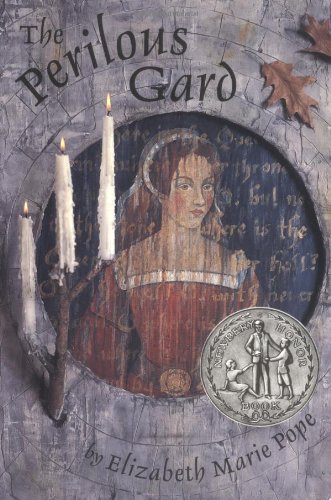 This take-off on the story of Tam Lin and the Fair Folk is an oldie-but-goodie that deserves to be revived. Since fairy tale and folk tale retellings are so popular these days, young adult fans of authors Donna Jo Napoli, Jessica Day George, Robin McKinley, and Shannon Hale should check out this combination of folklore and historical fiction. Ms. Pope’s excellent novel won a Newbery Honor in 1975, an honor it richly deserved.
This take-off on the story of Tam Lin and the Fair Folk is an oldie-but-goodie that deserves to be revived. Since fairy tale and folk tale retellings are so popular these days, young adult fans of authors Donna Jo Napoli, Jessica Day George, Robin McKinley, and Shannon Hale should check out this combination of folklore and historical fiction. Ms. Pope’s excellent novel won a Newbery Honor in 1975, an honor it richly deserved.
The story takes place at the end of the reign of Queen Mary I, aka “Bloody Mary.” Kate and her impulsive, lovable sister Alicia are ladies-in-waiting to the Princess Elizabeth, in exile from court at the drafty manor of Hatfield. When Alicia sends a letter of complaint to the Queen, Kate gets the blame, and she is banished to a manor house called The Perilous Gard in Derbyshire to live out her days in disgrace and under close guard. There, Kate meets the master of the castle/manor, Sir Geoffrey Heron and his strange, silent younger brother, Christopher. She also meets a strange lady dressed in green and hears many odd stories about the Elvenwood that surrounds Perilous Gard as well as the nearby Holy Well that draws pilgrims from near and far in search of healing and comfort.
I was especially intrigued by the hints and uses of Christian truth in this fantasy novel. (It does turn into a fantasy novel, as Kate encounters the reality of the Fairies who are behind all the stories she hears about strange, pagan rituals and kidnappings that have characterized Elvenwood.) The central conflict in the novel is between Paganism and the Fair Folk’s thirst for magical power and the Christian ideals of love and service and simple living. There is also a conflict within Kate herself as she sees herself as clumsy, unlovely and unlovable, but learns to see herself in a new light, giving herself in selfless service to another. The book is not overtly Christian or preachy, but in one conversation between Kate and the Lady in Green (queen of the Fair Folk), Kate actually puts into words some of the truths of the gospel in a rather compelling and interesting way:
Lady in Green: “I will not deny that your Lord paid the teind (ransom), nor that it would be good to have had some part in it, for He was a strong man, and born of a race of kings, and His tend must have been a very great one. But that was long ago, long ago in his own time and place. It’s strength is spent now. The power has gone out of it.”
Kate: “It has never gone out of it. All power comes from life, as you said yourself, but the life that was in Him came from the God who is above all the gods; and that is a life that knows nothing of places and times. I–I mean, that with us there is time past and time present and time future, and with your gods perhaps there is time forever; but God in Himself has the whole of it, all times at once. It would be true to say that He came into our world and died here, in a time and a place; but it would also be true to say that in His eternity it is always That Place and That Time–here–and at this moment–and the power He had then, He can give to us now, as much as He did to those who saw and touched Him when He was alive on earth.”
Granted, the Fairy Lady doesn’t really understand Kate’s gospel presentation, but I thought it was quite well put, and it fits in well with the imagery and the tension between paganism and Christianity that threads through the novel. I loved this story, and I think fairy tale fans would love it, too. A touch of romance, a bit of danger, and a coming of age motif combine to make The Perilous Gard a great read for older teens and adults both. I’d say it’s PG-12 or 13, only because it has some pretty intense descriptions of pagan sacrifice and Halloween evil, nothing nasty or sexual or graphically violent, though.
Pingback: Baker’s Dozen: The Best Adult and YA Fiction I Read in 2015 | Semicolon